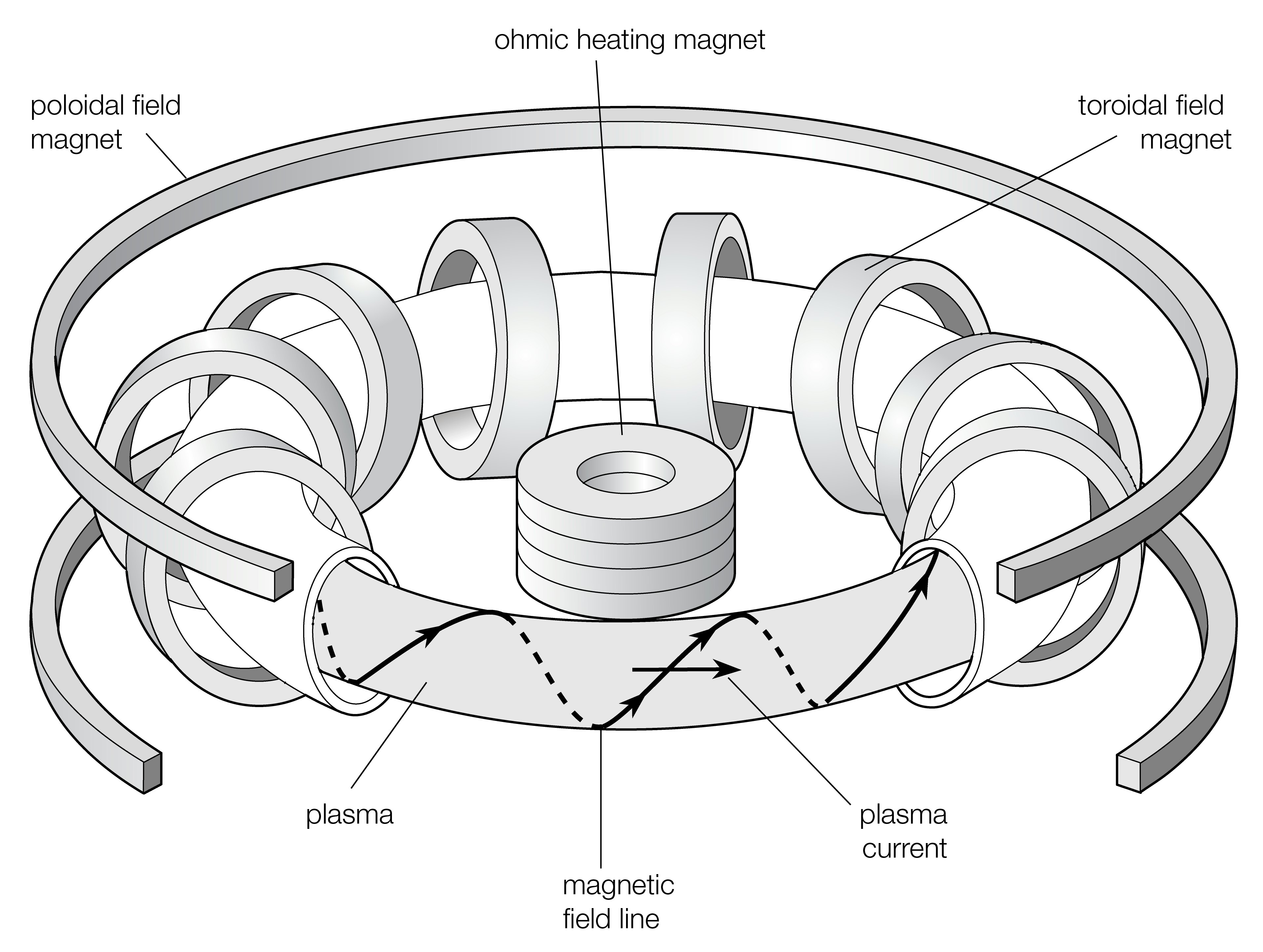
In 2008, the Marvel Cinematic Universe had its first rousing success with the release of Iron Man. In the movie, billionaire Tony Stark is wounded in a weapons demonstration gone awry — leading him to create an arc reactor to keep his heart alive. It’s a pocket-sized version of a device his company, Stark Industries, had worked on in the hopes of revolutionizing the energy industry.
But while the arc reactor hit the big screen, in the real world, scientists had been working on an ambitious plan to create a small reactor that could generate sustained nuclear fusion, known as a tokamak. Nuclear fusion could create clean, sustained, and potent energy, and a tokamak could be the ideal vessel to contain these reactions safely. The MCU conception of the arc reactor borrows heavily from this device.
“Indeed, the one shown in Iron Man is very heavily strongly inspired by this [tokamak],” Federico Felici, Research Scientist at the Swiss Plasma Center at EPFL, tells Inverse.
Now, a quarter-century later, scientists may be closer than ever to achieving a real-life tokamak that can create surplus energy — producing more energy released than it consumes — but how closely does the arc reactor in Iron Man resemble a real-life tokamak? Could Iron Man have actually predicted our clean energy future?
“I don’t think we will see people with arc reactor-powered suits,” Stephanie Diem tells Inverse. “However, I see fusion in our future.” Diem is an assistant professor at the University of Wisconsin-Madison who researches experimental plasma physics for fusion energy development.
Reel Science is an Inverse series that reveals the real (and fake) science behind your favorite movies and TV.
What is a Tokamak and How Does it Create Energy?

A tokamak is a torus (donut-shaped) device designed by Soviet scientists in the late 1950s that could capture energy as heat and convert it to electricity. Nuclear fusion is a premise that scientists and Hollywood have been banking on for decades, as seen by a newspaper clipping in Iron Man that reads: “Will the arc reactor save our energy needs?”
“The energy comes from the fusion process which is where light atoms combine into heavier ones and release enormous amounts of energy,” Martin Greenwald tells Inverse. Greenwald was formerly the deputy director of MIT's Plasma Science & Fusion Center and one of the co-founders of the private startup Commonwealth Fusion Systems (CFS).
In recent decades, institutions like the Princeton Plasma Physics Laboratory, Joint European Torus in England, MIT’s Plasma Science and Fusion Center, and private startups like CFS have also been working on their own tokamak concepts. Several nations are also collaborating together on the world’s largest tokamak device known as ITER in France that works by burning plasma, and they aim to debut the project in 2025.
Earlier this year, scientists achieved a breakthrough in nuclear fusion, creating surplus energy for the first time by fusing hydrogen atoms — specifically the isotopes deuterium and tritium — into helium. However, that experiment wasn’t done through a tokamak, but used lasers instead. No one has yet been able to produce surplus energy with a tokamak, but it’s a conceptually sound idea.

Fusion naturally occurs in the core of the Sun, and scientists want to replicate that process here on Earth, but there’s one problem: the core of the Sun is much hotter than Earth’s surface. To create sustainable fusion reactions on Earth, you need to heat matter to extremely high temperatures — perhaps 200,000,000 degrees, according to Greenwald. At those extremely hot temperatures, atoms get pulled apart into electrons and ions, forming an electrically charged gas known as plasma.
“Tokamaks work by confining the hot fuel, which is in the plasma state, for fusion by creating a magnetic bottle in the shape of a donut,” Diem says.
Normally, deuterium and tritium — the hydrogen isotopes used in fusion — both have positive electric charges and would repel each other. But the tokamak’s design, which uses superconductor magnets, forces them to collide and fuse with each other to produce helium without touching the walls of the device, which would be dangerous at such high temperatures.
“In the plasma state, these flying particles interact with magnetic fields, which means that you can use magnetic fields to basically keep them all together without touching the wall. And a tokamak is one particular way in which you can do that,” Felici explains.
Can We Make a Miniature Reactor Like in Iron Man?

Tony Stark’s father, Howard Stark, created the first arc reactor, but in Iron Man, Tony Stark creates a makeshift “mini” arc reactor in a cave in Afghanistan while being held captive with fellow scientist Yinsen. It’s a clear departure from the missiles that Stark Industries typically manufactures.
The arc reactor is made of palladium, but this isn’t necessarily realistic. It may, in fact, be a nod to a failed line of research, Paul Martin of Spitfire Research tells Inverse. “The involvement of palladium is clearly a reference to the Pons and Fleischman cold fusion discovery in the 1980s, which turned out to be nothing but measurement errors that couldn't be replicated,” he says.
Palladium might not make much sense as a fusion device, but there are some aspects of Iron Man that are more scientifically sound. Iron Man’s miniaturized arc reactor is basically a continuous energy-generating device that can produce three gigajoules of energy per second using fusion.
Stephanie Hansen, a physicist and senior scientist at Sandia National Labs who studies fusion, tells Inverse that fusion does not violate the laws of energy conservation because it converts a small amount of mass to a very large amount of energy via nuclear reactions, “So Iron Man is on solid ground there.”
Felici also says isn’t actually that far off from how much a real-life tokamak could produce and says some designs for fusion power plants are around one gigajoule per second.
“Fusion really can't be made to work on such a small scale”
But these fusion power plants would rely on much bigger reactors than the miniature one we see in Iron Man’s chest — and therein lies the big problem behind the movie’s concept.
“We already know that it's —most likely speaking — impossible to ever make the tokamak that small,” Felici says.
Basically, you need three things to have the necessary factors for fusion:
- Enough charged particles (density)
- Hot enough temperatures
- Enough time to hold the particles to fuse (confinement time)
Tokamaks provide all three conditions in theory, but Diem explains that “smaller devices have shorter confinement times and therefore a lower chance of fusing together.”
Greenwald agrees, stating that the smallest scale you could have and still achieve fusion is the size of a gas turbine power plant. “Fusion really can't be made to work on such a small scale — the energies and power densities involved could never be managed,” Greenwald adds.
That’s not to say that all arc reactors need to be on the scale of ITER, which is a whopping 30 meters (98 feet) tall. Back in 2015, MIT debuted its own “arc reactor” concept, which stands for “affordable, robust, compact.” The concept was not borrowed from Iron Man, but from early plasma experiments dating back to the 19th century.
“We appropriated those names for our planned experiments. My guess is that the creators of Iron Man were prompted along the same lines (and a few years earlier),” Greenwald explains.
Since then, MIT and CFS have begun developing a more refined small-scale fusion reactor experiment known as SPARC, which has a 1.85-meter (six-foot) radius. If that experiment successfully produces surplus fusion power, then the next step would be to build the prototype fusion power plant — a.k.a. the machine ARC — in the early 2030s.
Greenwald says Iron Man’s interpretation of fusion technology is true in “aspiration only” and comes from “the minds of the screenwriters, not the actual science used for fusion research.”
The Future of Fusion and Science Fiction

Greenwald says that fusion is not a “practical technology” yet, but, “We think we are close to making this a reality.” However, there are challenges associated with fusion and tokamaks that scientists will need to overcome if we want to power buildings one day as we see in Iron Man — let alone fusion-powered super suits.
Diem says that tokamaks also rely on a “delicate balance” between the magnetic pressure and the pressure of the plasma. Any imbalance in pressure would prevent scientists from achieving the conditions necessary for fusion, though Diem says scientists are getting much better at figuring out the right pressure balance through work like SPARC.
Felici’s research could also help scientists overcome some of the problems associated with tokamaks. His team published a paper in 2022 on using artificial intelligence to help determine how to control the magnetic fields of the tokamak based on past experience — a technique known as machine learning. The scientist likens the concept to using J.A.R.V.I.S.— the AI in Stark’s house who appears later on in the MCU — to control the tokamak.
“Essentially, artificial intelligence understands how the plasma responds to certain types of magnetic fields,” Felici says.
“I think in our lifetime, we will see something that looks like a tokamak powering our future,” Diem adds.
So, the fusion future that Iron Man bet on 25 years ago may soon become our reality — just don’t expect to see any fusion-powered superheroes flying around anytime soon.
“We envision fusion for powering cities or large towns, not individual houses, cars, or superheroes,” Greenwald says.







